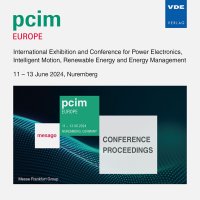A Systematic Comparison Study of Different Bonding Technologies for Large Substrate Attachment of Power Electronics
Konferenz: PCIM Europe 2024 - International Exhibition and Conference for Power Electronics, Intelligent Motion, Renewable Energy and Energy Management
11.06.2024-13.06.2024 in Nürnberg, Germany
doi:10.30420/566262290
Tagungsband: PCIM Europe 2024
Seiten: 6Sprache: EnglischTyp: PDF
Autoren:
Wang, Lisheng; Rietveld, Gert; Hueting, Raymond J. E.
Inhalt:
Solder joints, silver (Ag) sintering, and transient liquid phase (TLP) bonding are widely used bonding technologies for packaging power modules. Each technology has advantages and limitations regarding reliability, thermal conductance and cost. So far, these technologies have not been systematically compared, and in this work we aim to fill this gap. To this end, we have performed shear strength tests on different solder, sintered Ag and TLP joint samples as a function of aging via thermal cycling and high-temperature storage tests. The joint microstructure and failure modes were analyzed using a scanning electron microscope with energy-dispersive X-ray spectroscopy. The results of our study show that sintered Ag has the maximum shear strength both before and after aging of around 70 MPa, while solder joints have the lowest shear strength that decreases from 50 MPa to about 35 MPa after thermal cycling and aging. For TLP bonding, the shear strength remains essentially stable at about 50 MPa after aging due to intermetallic compound growth. TLP bonding thus has a higher reliability than solder joints and is a cost-effective bonding alternative to Ag sintering.


